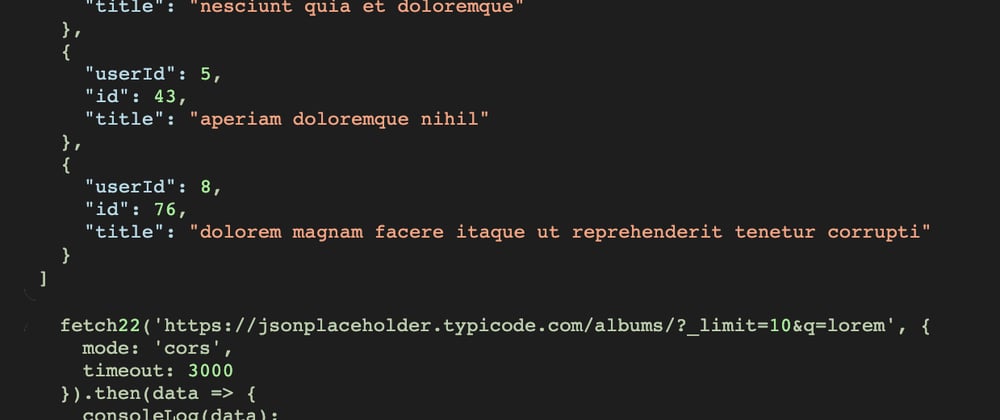Browsers have supported fetch() for years now (except Internet Explorer), but I still see many developers use classic XHR-based "ajax".
Why is that? I think — partly — it's because fetch() is missing timeout and an easier way of handling errors. Yet, developers do want to use it because of its simplicity.
In other words: it's a fetch-22 situation (bad pun intended!)
I've written a small module, fetch22(), which extends the fetch() init-object with:
- callback(true|false) : function to call when fetch starts(true) and ends(false)
- errorHandler(error) : custom function to run if an error occurs
- errorList : Array of status-codes to manually trigger errors
- parser(response) : custom function to parse the response, default will use .json() or .text(), depending on response content-type
- parserArgs : Array of extra arguments to send to the custom parser after response
- timeout : period in milliseconds to allow before a Timeout Error. Default is 9999ms
The module itself can be grabbed here, and a Pen with examples can be seen here (but go to Codepen and see it in full-screen):
Here are some of the examples from the demo:
Custom callback
The custom callback is called twice, once when the fetch initiates, and then when the fetch is complete done:
function startStop(bool) {
if (bool) {
console.log('START'}
else {
console.log('STOP');
}
}
Custom ErrorHandler
Receives the error-object as it's only param:
function handleError(error) {
console.error(error.name, error.message);
}
Custom parser
The default parser returns json or text, depending on content-type. An example of a custom parser, finding a <symbol> by id in an svg:
async function getSymbolFromSVG(response, id) {
const text = await response.text();
const parser = new DOMParser();
const doc = parser.parseFromString(text, "text/xml");
const svg = doc.getElementById(id);
return svg.outerHTML.toString();
}
Hope it will be as useful for you, as it has been for me.
Thanks for reading, and happy coding!



















